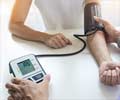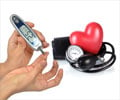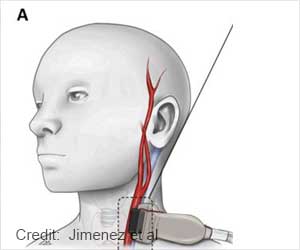A study involving more than 140,000 participants from 17 countries of varying income levels, exposes the inadequacies in the diagnosis and treatment of hypertension or high blood pressure.

"High blood pressure is the leading cause of cardiovascular disease (CVD) and deaths globally. It is associated with at least 7.6 million deaths per year worldwide (13.5 percent of all deaths), making it the leading risk factor for CVD. The majority of CVD occurs in low-, low-middle-, and upper-middle-income countries. The importance of blood pressure as a modifiable risk factor for CVD is well-recognized and many effective and inexpensive blood pressure-lowering treatments are available. Therefore, hypertension control and prevention of subsequent morbidity and mortality clearly should be achievable," according to background information in the article. "Information on hypertension prevalence, awareness, treatment, and control in multiple countries and different types of communities is necessary to provide a baseline for monitoring and also to inform the development of new strategies for improving hypertension control."
Clara K. Chow, Ph.D., of Hamilton Health Sciences and McMaster University, Hamilton, Canada, and colleagues assessed the prevalence, awareness, treatment, and control of hypertension in participants in the Prospective Urban Rural Epidemiology (PURE) study. The study included 153,996 adults (complete data for this analysis on 142,042) 35 to 70 years of age, recruited between January 2003 and December 2009. Participants were from 628 communities in 3 high-income countries (HIC), 10 upper-middle-income and low-middle-income countries (UMIC and LMIC), and 4 low-income countries (LIC). Hypertension was defined as individuals with self-reported treated hypertension or with an average of 2 blood pressure measurements of at least 140/90 mm Hg using an automated digital device. Awareness was based on self-reports, treatment was based on the regular use of blood pressure-lowering medications, and control was defined as individuals with blood pressure lower than 140/90 mm Hg.
Among the participants, 57,840 (40.8 percent) had hypertension and 26,877 (46.5 percent) were aware of the diagnosis. Of those who were aware of the diagnosis, the majority (23,510 [87.5 percent]) were receiving pharmacological treatments, but only a minority of those receiving treatment had controlled blood pressure (7,634 [32.5 percent]).
The authors found a large gap between both detection and control of hypertension across all countries studied. "It shows that while initial therapy was started in the large majority of individuals who are detected to have hypertension, control in participants receiving treatment was very poor. The use of combination therapies, generally required to achieve blood pressure control, was low. Awareness, treatment, and control were lower in LICs compared with other countries and in rural settings of LMICs and LICs compared with urban ones. Despite men having higher rates of hypertension, women consistently had higher awareness, treatment, and control of their hypertension, consistent with a large body of research on sex and health-seeking behavior. Also, participants with more education had greater awareness, treatment, and control, particularly in LICs."
"The widespread lack of hypertension awareness (a measure of hypertension case identification) and poor control (a measure of inadequate treatment) in all countries studied, despite the identification and control of blood pressure being prioritized by many national and global organizations and despite the availability of inexpensive and effective medications, is concerning," the researchers write. "These findings suggest that substantial improvement in hypertension diagnosis and treatment is needed."
Advertisement
Source-Newswise















